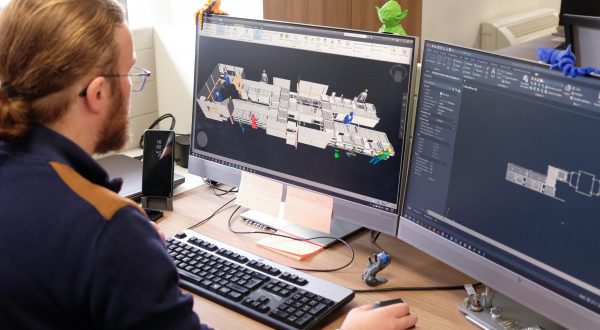Added to the new systems put in place after the Fukushima disaster and the 20-year lifecycle extension programme for power plants, non-destructive testing helps ensure the safety of nuclear installations.

© DAVID QUEYREL
Following the Fukushima disaster that took place in Japan in March 2011, new scenarios were incorporated into nuclear safety recommendations by the authorities. These gave rise to additional equipment requirements, covering local emergency response centres, back-up diesel generator sets, emergency cooling facilities, and so on.
“We work with stringent recommendations set by the French Nuclear Safety Authority, which has resulted in very strict methods and inspections being developed.”
In France, these new safety systems are supplemented by EDF’s “Grand Carénage” programme which is set to extend the operating life of nuclear power plants by 20 years, thus increasing their life-span to 60 years. The programme strengthens check-up and maintenance operations, creating an improved process in which non-destructive testing (the set of techniques used to determine the integrity of structures or materials – without damaging them – during production, service, or maintenance) plays a key part.
Anticipating failures
Due to this extension in the lifecycle of power plants, operators are expanding the equipment included in maintenance programmes to ensure compliance with safety obligations. “Think of it this way: a vehicle with 100,000 km on the clock will show damage that wasn’t anticipated when it was new, simply because it is ageing,” explains Philippe Bosch, CNDT director at VINCI Energies.
“Omexom NDT Engineering & Services, a business unit within the VINCI Energies nuclear division, develops techniques that enable inspections to be performed using non-destructive testing methods. These non-intrusive, non-destructive techniques ensure that there is no indication of faults or abnormal wear,” adds Philippe.
Omexom NDT Engineering & Services is involved at the very heart of the nuclear reaction, working on the sensitive components of the primary circuit, which cools the fuel in the reactor vessel. “These components are located in environments which, being radioactive, are inaccessible to human operators. So the techniques are often performed by automated equipment,” Philippe points out.
The most commonly used techniques are eddy current testing (electromagnetic inspection technique), ultrasonic inspection (ultrasound principle), and acoustic-emission monitoring. “We also have our own techniques including a leak-tightness testing technique for steam generators, which was developed in the 1960s,” he continues.
French expertise
With a nuclear fleet whose first power plants have now been in service for 40-plus years and which comprises 58 reactors, France is a leading player in the sector. “An entire industrial network has been developed in which power plants are supported by an industrial fabric made up of independent, experienced companies capable of carrying out the testing,” says Philippe Bosch.
“We work with stringent recommendations established by the French Nuclear Safety Authority. It sets the bar very high in terms of safety, which has resulted in very strict methods and inspections being developed,” he adds. This French expertise is sought after by countries with nuclear fleets that are not as extensive (South Africa, Slovenia, and the UK) or that are more recent but expanding (China).
12/04/2018



